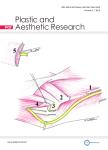Surgical management of zygomatic complex fractures in a major trauma centre
作者机构:Faculty of DentistryOral&Craniofacial SciencesKing’s College LondonLondon SE11ULUnited Kingdom.2Department of Oral&Maxillofacial SurgeryKing’s College London Hospital NHS Foundation TrustLondon SE59RSUnited Kingdom.
出 版 物:《Plastic and Aesthetic Research》 (整形与美容研究(英文版))
年 卷 期:2019年第6卷第5期
页 面:10-22页
学科分类:08[工学] 0812[工学-计算机科学与技术(可授工学、理学学位)]
主 题:Zygomatic complex fractures ZMC open reduction internal fixation zygomaticomaxillary buttress
摘 要:Aim: To analyse the epidemiology, aetiology, and surgical management of zygomatic complex (ZMC) fractures in our major trauma centre, and to compare the number and location of fixation points and surgical access in our patient cohort with the literature. Methods: Retrospective analysis of all operative cases (Open Reduction and Internal Fixation) of zygomatic complex fractures over a one year period (2016). Results: A greater proportion of patients in our cohort (54%) were treated with one-point fixation compared to the literature, with the zygomaticomaxillary (ZM) buttress being the most popular fixation point (90%). ZM buttress and frontozygomatic (FZ) suture were the commonest choices for two-point fixations (70%). Buccal sulcus incision was used for ZM access in all cases. For FZ access, upper blepharoplasty incision was the most common (56%). For infra-orbital margin access, transconjunctival incision was the most common (75%). There was no significant association between number of fixation points and presence of associated injuries, impact of injury, or time to operation. There were no post-operative complications. Conclusion: A greater proportion of patients in our cohort were successfully treated with one point fixation compared to the literature, and fewer patients underwent orbital floor exploration and repair in our cohort compared to the literature. This study highlights the ongoing variation in the surgical management of ZMC fractures.



